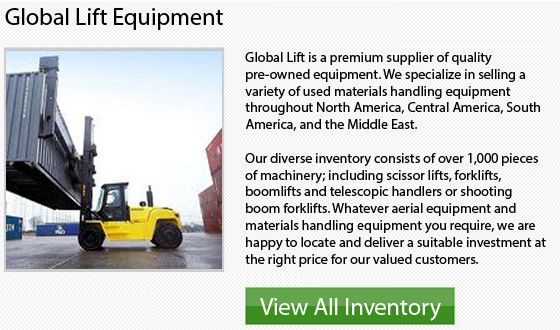To be able to guarantee safety and productivity, your machine must be maintained whether it is a second-hand forklift or a new forklift. Careless forklift operation could lead to added costs because of damage and abuse. There are simple ways to identify operator practices which indirectly contribute to expenses related to the incorrect operation of Caterpillar forklifts or lift trucks. The following tips will really help you lessen operating expenses while ensuring a long life for your equipment.
Causes Of Forklift And Facility Damage
Incorrect Forklifts. For the safe and efficient performance of a forklift, it is important to choose the right lift truck equipment for the application. One of the most common mistakes is utilizing the wrong type of forklift or alternatives for the specific task. Machinery can suffer premature wear and tear. Components may be subject to failure. Make sure that the lift truck is fitted with the right tires and that they are not worn.
Incorrect Forklift Operating Practices. Incorrect forklift operating practices are a common cause of impact damage. Damage to facilities, product or equipment may happen while navigating around products. A congested work place lends itself to impacts. For instance, pushing pallets, referred to as "Bulldozing", can damage the transmission and wear tires.
Unsafe Forklift Speeding and Lifting. Personal injury and equipment damage could happen by incorrect lifting practices. Common errors comprise traveling very fast and lifting very high. A load which is too heavy could cause the forklift to tip over. The driver must make sure that the forks are level.
Poor Floor Conditions. The most common cause of forklift damage are debris and obstructions on the floor. If wood, twine, plastic or banding gets into the engine compartment, the cooling system could be compromised. The result could be engine failure or even fire.
Axle or radiator damage is one more common result of driving over debris.
The lifting capacity of the Caterpillar DP45 in Northwest Territories is 9000 lbs. Some of the other notable features of the DP45 are: 188 feet lifting height and a diesel engine.
The P12000 manufactured by the company Caterpillar is a two wheel drive lift truck in Northwest Territories. This version has a propane powered engine and has the capacity to lift a max weight of 12000...
The GP50 unit manufactured by the company Caterpillar is a two wheel drive lift truck in Northwest Territories. This unit has a propane powered engine and has the capability to lift a maximum of 10000...
The lifting ability of the Caterpillar P26500 in Northwest Territories is 26500 pounds. Some of the other notable features of the P26500 are: 168 feet lifting height and a diesel engine.
The TL1055 manufactured by Caterpillar is a four wheel drive lift truck in Northwest Territories. This unit has a diesel powered engine and has the capability to lift a maximum of 10000 lbs up to...
The lifting capability of the Caterpillar V300 in Northwest Territories is 30000 pounds. Some of the other notable features of the V300 are: 168 feet lifting height and a diesel engine.
Caterpillar Large Capacity Forklifts Northwest Territories
History of Forklifts
The technology of forklifts provides the capacity to easily move bulky or heavy items across short distances. Forklifts are commonly utilized in the every day operations of different kinds of businesses. Forklift...
Caterpillar Loaded Container Handlers Northwest Territories
Internal combustion counterbalanced lift trucks
Internal combustion engine trucks are powered by diesel, gasoline, liquid propane or compressed natural gas. Lift trucks that are powered by gasoline or diesel are normally big trucks utilized outdoors....
Caterpillar Warehouse Forklifts Northwest Territories
Forklift Classifications
Below are the classes of forklifts which describe the use and fuel option of every kind of forklift. Certification is needed for each class of forklift which the operator will be using.
Class...


